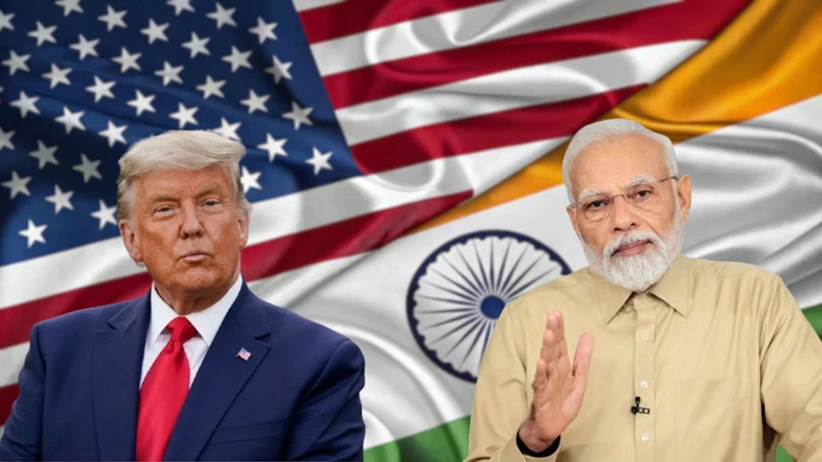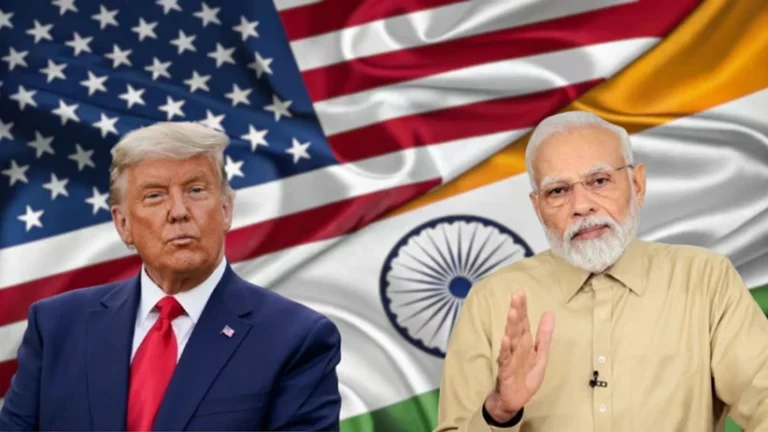
Countdown Begins: PM Modi Has 19 Days to Dodge Trump’s 50% Tariff Shock
A Strategic Crunch for India
On August 6, 2025, U.S. President Donald Trump announced that tariffs on Indian goods will rise to 50%, doubling the existing rate of 25%.
The reason given: India’s continued purchase of Russian oil, which Trump believes helps Moscow in the Ukraine conflict.
- The first hike took effect on August 7.
- The additional 25% will apply in 21 days — around August 27.
India has strongly opposed the decision, calling it “unfair,” “unjustified,” and “selective” — pointing out that other major buyers of Russian oil, like China, have not been penalized.
Why This Matters: Risks and Challenges
Experts warn the tariffs could have serious consequences for India:
- Moody’s predicts it could slow GDP growth by 0.3%.
- Investor confidence may drop, with foreign investment outflows already rising — US$900 million in August after US$2 billion in July.
- Exports at risk, especially in the garment sector, where U.S. buyers are pausing or moving orders.
India’s Possible Game Plan
With just 19 days before the full tariff hits, India is moving quickly with a four-part strategy.
1. Diplomatic Talks and Trade Concessions
India may offer trade concessions to delay or stop the hike.
- This could include lowering tariffs on some U.S. goods like motorcycles and whiskey.
- In early 2025, India offered to cut duties on goods worth US$23 billion if the U.S. eased tariffs.
2. Teaming Up with BRICS and Other Partners
Prime Minister Narendra Modi recently spoke with Brazilian President Lula.
- Lula promised to raise the issue in BRICS meetings.
- Both leaders agreed to boost bilateral trade to US$20 billion by 2030.
- India may also strengthen ties with China and other strategic partners to balance U.S. pressure.
3. Supporting Affected Sectors & Exploring New Markets
The government plans to support industries most at risk — textiles, chemicals, MSMEs — by:
- Launching export-promotion missions.
- Targeting new markets in the Middle East, Africa, Latin America, and South Asia.
- Encouraging trade with Europe, which sees India as a stable alternative to China.
4. Challenging the Tariffs Legally
Trump’s tariffs use the International Emergency Economic Powers Act (IEEPA).
- U.S. courts have previously ruled similar tariffs as unauthorized or illegal.
- India could monitor these legal challenges and use them to seek a delay or cancellation.
What Lies Ahead
With less than three weeks before the deadline, India’s focus is clear:
- Negotiate with the U.S. for a solution.
- Strengthen alliances within BRICS and beyond.
- Protect key industries with domestic support.
- Diversify markets to reduce dependence on U.S. trade.
- Track legal developments that could work in India’s favor.
Bottom Line
This is more than just a trade dispute — it’s a test of India’s resilience and adaptability. The next 19 days will decide whether India can turn a potential economic blow into an opportunity for stronger, more independent trade relationships.
If handled well, this could become a turning point in India’s long-term trade strategyv





